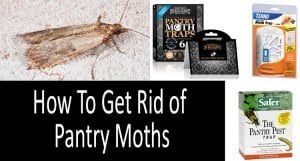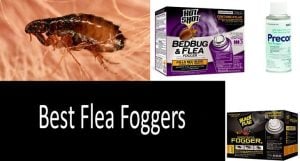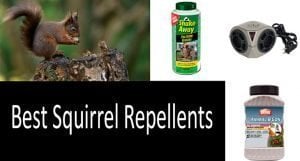What is the best rat poison? We advise you to opt for slow-acting baits. They are safer to humans and pets as they require multiple feedings to kill. Rats will not associate the object with the poison effect and will not shy away from getting close to the trap. We recommend using a slow-acting JT Eaton 709.
Upon eating the bait, rodents die within several hours to several weeks. Mice may die within a day, while the population of rats dies more slowly, within a week or two, because they are larger than mice. Remember — poison baits are toxic and can kill any animal including your home pets (cats and dogs).
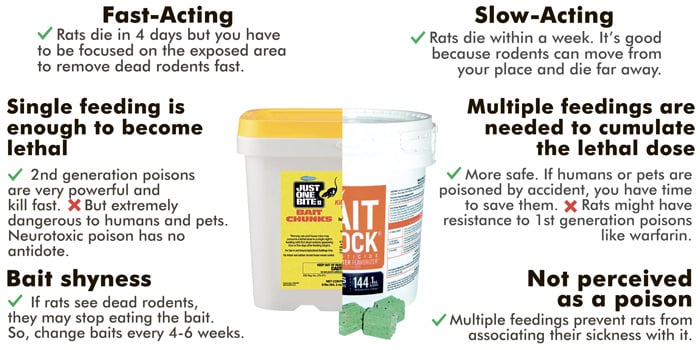
Poisons can be fast- or slow-acting in terms of how quickly they kill rodents. If you need fast & powerful poison, choose second-generation rodenticides like Just One Bite II, when a single feeding is enough to kill. But such fast-acting poisons can be used in and around agricultural buildings only.
Rats are picky and finicky. Biologists suggest changing baits every 4-6 weeks or as soon as you notice rats avoiding your poison. Rats can avoid some tastes or smells. For best results, use different baits with a fresh rodenticide and flavors.
|
1. JT Eaton 709-PN Poison Bait | 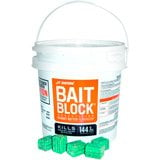 Check the current price |
|
2. Just One Bite II- Fast-acting | 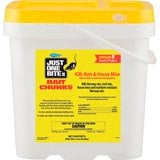 Check the current price |
|
3. Neogen 116300 Ramik Green: fish flavor | 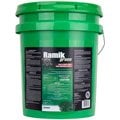 Check the current price |
|
4. Bait Station | 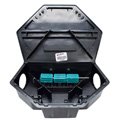 Check the current price |
|
5. JT Eaton 704-AP: apple flavor | 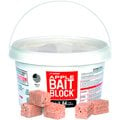 Check the current price |
|
6. D-con Rat Poison Bait Station | 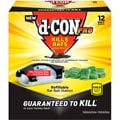 Check the current price |
What you’ll learn from this Guide:
All of poison baits are lethal. Rodenticides are toxic to rodents (and unfortunately also to humans) in a variety of ways.
Active ingredients in rodenticides that are anticoagulants (e.g., warfarin, diphacinone, and bromadiolone) disrupt the blood’s ability to clot, causing internal bleeding and rodents die from internal hemorrhages.
Products containing non-anticoagulant affect the nervous system (e.g., bromethalin). They increase the levels of calcium in the blood, leading to kidney, liver, or heart failure (e.g., cholecalciferol).
Slow & Fast Acting poisons:
- First generation — poison kills rodents slowly, there are several days of feeding needed. Warfarin, chlorophacinone, and diphacinone are known as multiple-dose anticoagulants. They have a cumulative effect, so the rodents do not die immediately, rather within a few days. For best results, rats should eat the poisonous bait repeatedly — JT Eaton
- Second generation — a single feeding is enough (bromadiolone, brodifacoum) — Farnam
Using poison bait is generally cheaper than trapping because it is less labor-intensive, and they do not need to be checked every day. So it’s more beneficial to use poison bait in big areas and constructions – such as hangers, sheds etc., where other methods are inconvenient to use.
Slow and Fast Rat Poison: What’s the difference?
As you may know, there are three types of rat poison: first-generation anticoagulant, second-generation anticoagulant, and non-anticoagulants. However, they can be further divided into two categories: fast and slow poison. The table below further explains the difference between them, their pros&cons.
{code 347}
Expert Opinion: David Johnson, Professor of Biomedical Sciences, East Tennessee State University

David Johnson, Professor of Biomedical Sciences, East Tennessee State University
David Johnson is a Professor of Biomedical Sciences at East Tennessee State University. His areas of interest include entomology, the structure of proteins, blood proteins, and many more. David Johnson has a number of scientific publications on alpha-1-proteinase inhibitors and the structure and functions of proteins.
“At the University of Wisconsin, the scientists were asked to try to figure out why cows were dying when they were being dehorned. The scientists found out that the cows were eating some spoiled sweet clover that contained this compound called Dicoumarol that is similar in structure to Vitamin K. So knowing that chemistry, they figured out why these cows were dying — because their Vitamin K was not working well. The Wisconsin scientists then developed this compound called Warfarin also known as Coumadin. And Warfarin stands for WARF (Wisconsin Alumni Research Foundation). The University of Wisconsin benefited from the patent of Warfarin for a number of years that is used to treat patients and it is an excellent rat poison! The rats tend to eat large amounts of it and they bleed to death or hemorrhage to death.”
{youtube https://youtu.be/3FScfcuWbiI}
Best Rat and Mouse Poisons
1. JT Eaton 166004 709-PN Bait Block Rodenticide Anticoagulant Bait | Best Slow-Acting
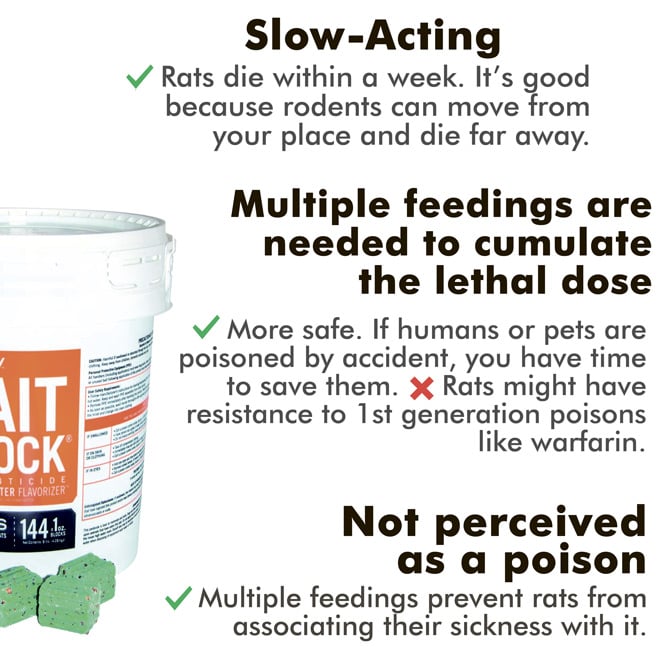
Rats love JT Eaton Bait – this is confirmed by customers. People are quietly leaving their homes, placing rat bait stations with this rat poison bait, and after return they find empty stations. It means that “someone” eats it!
In addition, users use this lure to get rid of gophers and squirrels, too – but we recommend placing poison bait with a bait station. This is particularly important because some users complain that after just laying the bait out on the floor, mice ate it and left the harmful (brown) granules of the bait intact, and go away.
Customers also noted that, JT Eaton begins to work very quickly – one girl said that rats in her house started to eat blocks on the first day after placing it at basement, and then they began to disappear gradually. If you want to break JT into pieces, it is easy to make.
By the way, one guy gives a valuable tip to other customers about using JT: “Remember, the adult rats will feed something new to their young and watch to see how they react to it, before they will eat it themselves. Be patient”. More helpful tips you’ll find here.
The JT Eaton Bait Block rodenticide is a first generation anticoagulant bait.
Active ingredient: Diphacinone – multiple feeding needed.
{youtube https://youtu.be/aF0hMLrV_U4}
{code 427}
2. Farnam Just One Bite II Bait Chunks, 8lbs (64, 2 oz chuncks) | Best Fast-Acting
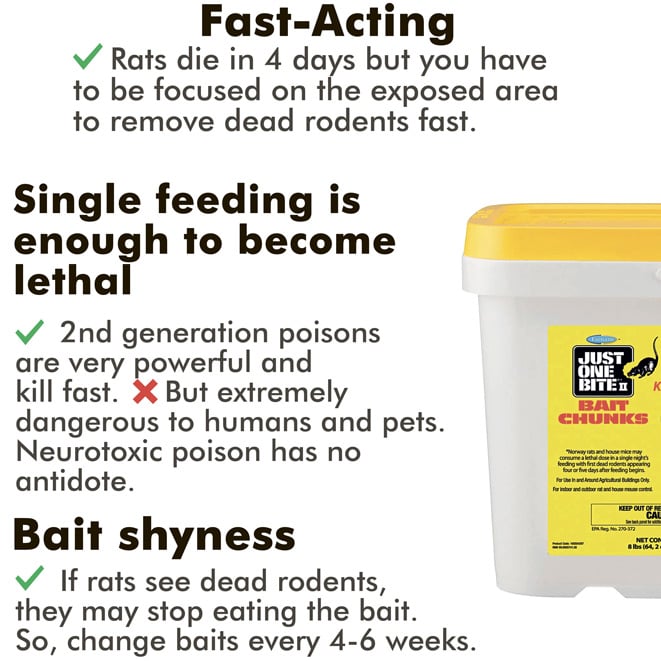
In opinion of customers, rats really love to eat Just One Bite bait. Not only rats – this bar bait will also take care of mice, chipmunks and squirrels, too. Customers noted that this works great: one of them found a dead rat within 12 hours after he placed the bait.
Customers advise to not lose heart if it doesn’t seem to work. You might have to use a larger portion for pesky mice and rats, or use Farnam bait with a trap for better results – as one of the customers that used it as bait with a couple of old-school snap traps and an electronic mouse trap said it works like a charm for him.
One of the customers said that he purchased this rat poison and left it in the bag in the room. Later he heard a rustling and other strange sounds. It turns out that the rodents found the package with the bait from the smell and badly gnawed the content! “I know you’re supposed to position the poison in the critters pathway but my critter did it for me”, – he said.
You’ll probably have to get rid of dead rats from your basement and other places after their lethal feeding. In such a case, we also recommend purchasing one of those long claw grip things people use to pick up trash in order to remove dead rats – such as the Unger 36-Inch Pick-Up Tool.
Active ingredient: Bromadiolone – single feeding needed
{code 429}
Rat Bait Stations | Tomcat & Protecta
To keep your cats or dogs from eating the poison, use bait stations that only rodents can enter. Rat poison baits are used in bait stations, like this.

The Tomcat Child & Dog Resistant Station provides a high level of station security and has a see-through window for easy monitoring of bait.
{code 1014}

Protecta LP is a triangular-shaped “low profile” bait station. It fits in corners and is ideal to use indoors in different tight locations.
{youtube https://youtu.be/0yq4KCKW-PM}
3. MOTOMCO Tomcat Mouse and Rat Liquid Concentrated Bait
In territories where water is in limited supply, a liquid rat poison works great. For example, you can buy Tomcat Liquid Poison Bait.

{code 618}
What to do when rats do not eat poison baits?
Rats are picky and finicky. Thomas Pritchard, associate professor of neural and behavioral sciences at the Penn State College of Medicine, says that to avoid poisoning a rat “will nibble at the food and walk away”.
It wait for a day to see if the food makes her sick, and if it does, then the rat will avoid the same flavor, taste, and smell in the future. It means that when rats stop eating your poison baits or don’t touch them altogether, then they are already familiar with either the toxicity of the bait or its unpleasant flavor.
So, what would you do? Change the bait as soon as you notice rat avoidance!
You must know that rats and mice are very canny creatures, so if they see that one died from this bait they can reject eating it. So if you see that rats or mice don’t eat it, change the bait.
Mice and rats can learn to identify and avoid toxic baits; this tendency is known as “bait shyness.” To avoid bait shyness, it may be necessary to prebait (offering rodents similar but nontoxic bait prior to applying the toxic bait) an area prior to using toxic baits, states Utah State University.
Remove all potential sources of food so rats have no choice but to eat the bait. Use only tight-sealed metal containers to store garbage.
What are the right and most effective ways of using rat poison? Where to put it exactly?
Whenever you see rats’ characteristic droppings of feces and urine, these are the exact places you need to put your poison baits.
Train the rats to lean that the baits are safe to eat. Place the baits here and there whenever you see rodent activity but do not insert poison into them. Then after a short while, 2-3 days, place the baits with poison in the evening. Remove the leftovers in the morning. Follow the same routine for the next couple of days (place rodenticide baits in the evening, clean after in the morning). That will ensure most of the rats are poisoned.
{code 396}
4. Tomcat All Weather Bait Chunx, 4 Lb

Tomcat All Weather Bait is easy to use and works against mice, squirrels, voles, raccoons, chipmunks and other rodents that damage your life.
We found out that this product is just like the rat poison bait that professional exterminators use, but some people think that the 4 lb. is plenty for non-commercial applications. The blocks of bait have holes to insert them onto the steel rods in a bait station, which keeps them away from other animals. You’d better use rat bait stations because we don’t recommend to use Tomcat without one.
{youtube https://www.youtube.com/watch?v=ao4bnoZReZk;t=0s}
A one-bait bucket lasts most in the summer and fall, and during winter it can last the whole season. Tomcat bait chunks work fast – a lot of people say that they began finding dead rats the next day or within the next week or two, it depends on the stage of rodent infestation in a house or attic. And, it’s enough to deal with rodent problems for a very, very long time: “Once the immediate problem is resolved, I’ll just leave the bait blocks in place and check them about once a month. If one is eaten, I’ll replace it at once. No more rats!”
Remember that rats can gather up the blocks and take them back to their nest, where they will die. So you might think that the bait doesn’t work, because you don’t see the rats’ corpses.
Active ingredient: Diphacinone – multiple feeding needed
{code 426}
5. Neogen Ramik Green Fish Flavored Weather Resistant Rodenticide Nuggets

As a weather resistant rodenticide with fish flavore you can choose slow acting poison Ramik Bars or Neogen Ramik Green Nuggets, made of 1st generation anticoagulant: Diphacinone (.005%)
It is suited for use in wet and damp areas.
As a part of Neogen’s 4-step rodent control program it is used to control House mouse (Mus musculus), Norway rat (Rattus norvegicus), Roof rat (Rattus rattus), Cotton rats (Sigmodon hispidus)*, Eastern harvest mouse (Reithrodontomys humuli)*, Golden mouse (Ochrotomys nuttalli)*, Polynesian rat (Rattus exulans)*, and Meadow vole (Microtus pennsylvanicus)*, White-throated woodrat (Neotoma albigula)*, Southern plains woodrat (Neotoma micropus)*, Mexican woodrat (Neotoma mexicana)*.
{code 1182}
6. d-CON Rodenticide Rodent and Mouse Bait Station Corner Fit


This is an old and proven killer of rats. This package contains one refillable corner fit bait station, 12 Bait Refills. Just place it in the approximate area where you saw the rodents.
As customers noted, D-Con Rat & Mouse Bait works on mice and rats (especially on horrible “Norweigen Warf Rats”), squirrels and chipmunks. If you want to destroy rats to the bitter end, you need to keep giving them more poison bait until they all die.
Look at the common customer’s review: “My husband has been using this brand for a few years now to deter some rats that tend to live in the attic. It does help a lot, just have to make sure once use, you have to regularly check the attic for potential issues of possibly finding dead rats.”
By the way, there are a lot of other useful tips among users’ feedback:
- Normally the activity of the mice increases in early November – be ready!
- You can mix it with peanut butter.
- Users give a tip not to resort to other methods of getting rid of rats (exterminator’s ways or glue traps, for example) at the same time as using D-Con Ready Mix Killer, they can stunt the bait’s effectiveness.
Active ingredient: Brodifacoum.
{code 619}
Rat & Mouse Poison Baits Comparison Table
{code 516}
{code 396}
Rat Poison & Pets (Dogs, Cats)
There are no pet-safe poisons, as all of them are created to kill rodents. Be very careful: rodenticide poisoning may occur when your pet swallows such bait.
Cesar Rueda advice: “Please be very careful using this bait if you have a dog. Your dog may not be able to get into the bait station, but rodents have a tendency to want to hide these baits all around the backyard…”
In order your cats or dogs do not eat it in the yard by chance, you may string it up with a strong wire between a couple of fences, for example, or hide pieces of bait in landscape rocks or other places where pets can’t get – and then wait for dead rats.
“Just use it carefully in garages and attics — places where your kids and pets aren’t going to find it and sample it. It’s possible that a dying rat or mouse will exit and be eaten by another animal (though if you live in an urban area, the chance is low compared to a rural location) — but my experience is that most will die near the location where you used this. Not a pleasant smell for a few days (which is why I won’t use in an attic, only in a garage or storage building, where I don’t have to contend with the odor)”.
{code 19}
How to Use Poisons: Rules & Tips
- Do not disregard prevention steps: take away the garbage, always use tightly sealed metal containers for both trash and food, do not leave pet foodstuff overnight, seal up holes and cracks in the house, use repellents
- Use bait stations that only rodents can access
- Use different bait stations for mice and rats: rats are bigger than mice, thus require bigger stations
- Wear gloves to prevent your smell on the bait
- Choose products that are ready to use
- Choose low-risk pesticides over high-risk
- Always follow the instructions of use and disposal provided by the manufacturer
- Store it in original container
- If accidental exposure occurs, call 911 immediately.
{code 19}
Pros & Cons of Slow Poison
| Pros |
|---|
|
| Cons |
|
Pros & Cons of Fast poison
| Pros |
|---|
|
| Cons |
|
{code 346}
What to look for when buying?
- Size: for large rat populations choose a bucket of poison. If you have rats here and there, occasionally, then choose bait stations
- Ingredients: if you have children and pets in your household, then opt for a safer poison (1st generation), or choose other alternative elimination methods
- Choose the approved rodenticide. If you want to check if it has been approved by the EPA, then check it in the Pesticide Product and LabelSystem.
Poison Effectiveness: when rodenticide is better than other pest control methods?
Poison is never better than other pest control methods. It endangers biodiversity, put at risk your loved ones, and contaminates groundwater and soil.
However, if you are aware of the risks that pesticides entail and are still willing to take them. Then there are a couple of cases that can justify the use of poison:
- All other methods have failed to work
- You have a large rat infestation that damages your crops, vegetation, and property
- Rats put in danger your children
- Rats put your health at risk
- You want to exterminate most of the rat population before you switch to more safe and humane methods
Rat Poison Symptoms & First Aid
Common symptoms are the same in both humans and pets. Please, watch out for these and call 911 or Poison Control for Humans at 1-800-222-1222 and Animals at 1-888-426-4435 whenever you see these symptoms in others or experience them yourself:
- Anorexia: appetite loss
- Impaired movement or vision
- Blood in stool and vomit, nosebleeds, bleeding gums
- Paralysis
- Weakness and fatigue
- Seizures
- Hair or fur loss
- Shortness of breath
Some of the symptoms may take time to develop: from a few hours to a few days.
Poisons and pets: First aid
Whenever you see your pet suffer the symptoms described above, call Animal Poison Control immediately. Unfortunately, there’s nothing you can do at home to help your pet. Your pet might require prolonged treatment with Vitamin K.
Poison and humans: First aid
Call 911, Poison Control, or your doctor and receive first recommendations as to what you can take and do to help you deal with the first symptoms. Some of the meds the docs that advise you to take can be charcoal and syrup of ipecac. However, do not take any medication if not directed by professional. Charcoal may not work for some poisons or even make things worse. Vitamin K shots might be also necessary for full recovery.
What precautions should I take when using rat poison?
The following precautions are necessary for safe use of poison at home:
- Store it in original container
- Always use gloves when applying poison and wash hands immediately afterwards
- Do not handle baits near foodstuff
- Use bait stations to prevent pets and children from accessing them
FAQ
How to safeguard my pets against poison?
Use bait stations: This way, your pets won’t be able to access it.
If my dog or cat eats a dead poisoned rat, will my pet die? Or does poison break down within the rat’s body?
Yes, there’s a risk of secondary poisoning. So whenever you think your pet consumed a dead rodent, please, call Animal Poison Control immediately.
Can I place a poisoned bait into a regular rat trap?
Yes, you can, but we do not recommend doing it. Your dog can access the bait and die, your child can be exposed to the poison, and suffer as well. So please use special bait stations to ensure no one in your household gets hurt.
What’s the difference between different colors of rat poison?
There’s no color coding standard for rat baits, but generally, the color indicates the main ingredient in it.
Which other pests can I kill using rat poison?
You can kill any pests with rodenticide. Anyone who consumes it can die.
Is rat poison a chemical hazard? Is it legal?
Of course. That is why it’s called a pesticide, and controlled by the EPA. Yes, it is legal. But using it to kill other animals is illegal.
Using Poisons on the Poultry Farm
Poultry houses and livestock barns are very attractive for rats for reasons that they provide places to hide and nest, abundance of water and food. Rats will eat and contaminate poultry feed, cause multiple physical damage to building structures, equipment, and electrical wiring.
There are several things you can do to control a rodent population:
1. Prevention and sanitation: prevent rats from accessing the barns and poultry houses by sealing the cracks and holes shut. Employ good housekeeping practices: clean the barns and coops frequently and carefully, mow the grass and keep the trash away in the sealed metal containers, get rid of the garbage, sawdust, and clutter to prevent opportunities for nesting.
2. Rodenticides. Contrary to popular belief, rat poison is allowed for use in poultry farms and recommended as an effective method of controlling rodents by Mississippi State University biologists. However, please, exercise extreme caution to prevent accidental and secondary livestock poisoning.
Tips for using poison on the poultry farm:
- Use ready-made products
- Follow the instructions carefully
- Prebaiting period is necessary for the rats to get used to its safety
- Number of bait stations must directly correlate to the degree of rat infestation on your farm: the larger the rat population, the more baits you need
- Ensure you put the baits wherever you’ve seen the rodent activity: if you fail to place the baits everywhere the rats travel, they’ll just migrate to a safer place without the poison
- Remove all other sources of food: check for poultry feed spills regularly and remove them as soon as you notice
- Change poison baits frequently: use different baits with different active ingredients and flavours, rotate them over time
- Use gloves to prevent your smell on the bait and for extra protection against the poison
- Use different bait stations for mice and rats: rats are bigger than mice, thus require bigger stations
- Ask your poultry supply store for any recommendations
Yes, poisons kill rodents. But you don’t know what place to die they will choose. Dying rodents are looking for a place to die, and you are lucky if they go away. But perhaps it will happen in your home or backyard, then you will find a nasty surprise – dead rat smell. (If it bothers you, read “How to get rid of dead rat smell”).
F.A.Q about Poison Bait
Can I use the rat poison bait inside a house? How to do this best?
Yes, Havoc Rat & Mice bait can be used indoors. You may either scatter the granules around, or just open the packet and place it where the rats are likely to run.
There are mice in my attic. Shall I leave the bait in there? It is rather difficult for me to get into the attic, so I am afraid that the smell of dead mice will trouble my family afterwards.
The chief advantage of this bait action is that after being eaten by mice or rats it causes great dehydration in their bodies and they are eager to find the source of water or die. As a rule, they manage to leave the house – but if not, you won’t notice any strong smell. So you can leave the bait in the attic.
How long is the shelf life of the product?
You need not be worried about this: Havoc bait may be kept as long as 4 or 5 years and this period will not impact its efficiency as the packets are sealed safely.
Does Havoc Bait work on rats and mice with the same effect?
Yes, in practice the bait attracts and kills both mice and rats.
What Is The Best Rat and Mouse Bait for Traps?
There are a lot of options to choose from, and you should also know how to lure the pests in effectively. For the rat trap, you should choose the best bait that will work effectively on rodents in your region. This is a necessary step, because if the bait does not attract rats, they will never go for it and you’ll be left with an empty rat trap and persistent problem.
Have you heard about the great rat eradication? It’s an example of large campaign which directed to getting rid of rats in huge numbers. We hope that there are people amongst you who just have a small rat infestation – you can use organic baits for rat traps in order to eliminate some rats.
You can choose any of the natural baits for rat traps below:
- Peanut butter: It’s actually more effective than cheese, as we see in cartoons. Rats are very attracted to peanut butter.
- Chocolate: Sweet chocolate definitely entices rats to come out of their places of rest and try to get some candy.
- Bread: Plain bread or bread with a little butter on it is very effective for baiting rats.
- String: A string is a nesting material attracts rats significantly. They use it to make their nests and keep warm. This will be an incentive to come to the rat bait.
- Cotton: Cotton is another nesting material that can be used to attract rats.
{code 19}

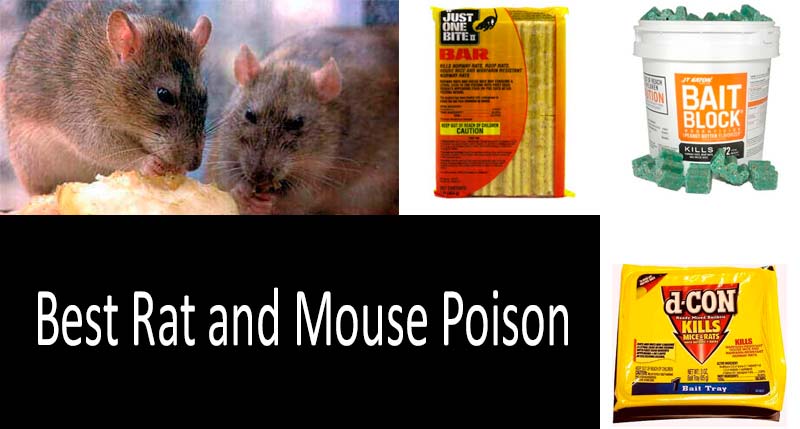
 Type: Bait blocks / Active ingredient: Diphacinone / Speed of rodenticidal action: Multiple-dose anticoagulant. Kills rodents slowly, there are several days of feeding needed.
Type: Bait blocks / Active ingredient: Diphacinone / Speed of rodenticidal action: Multiple-dose anticoagulant. Kills rodents slowly, there are several days of feeding needed.  Type: Bait bar / Active ingredient: Bromadiolone / Speed of rodenticidal action: Fast acting; A single feeding is enough.
Type: Bait bar / Active ingredient: Bromadiolone / Speed of rodenticidal action: Fast acting; A single feeding is enough.  Tomcat Rat & Mouse Killer Refillable Bait Station – Child and Dog Resistant (1 Station, with 15 Baits)
Tomcat Rat & Mouse Killer Refillable Bait Station – Child and Dog Resistant (1 Station, with 15 Baits)  Type: Liquid bait / Active ingredient: Sodium salt of diphacinone / Speed of rodenticidal action: Kills rodents slowly, there are several days of feeding needed.
Type: Liquid bait / Active ingredient: Sodium salt of diphacinone / Speed of rodenticidal action: Kills rodents slowly, there are several days of feeding needed.  Type: Bait blocks / Active ingredient: Diphacinone / Speed of rodenticidal action: Multiple-dose anticoagulant. Kills rodents slowly, there are several days of feeding needed.
Type: Bait blocks / Active ingredient: Diphacinone / Speed of rodenticidal action: Multiple-dose anticoagulant. Kills rodents slowly, there are several days of feeding needed.  Neogen Ramik Green Fish Flavored Weather Resistant Rodenticide Nuggets, 4 lb bag
Neogen Ramik Green Fish Flavored Weather Resistant Rodenticide Nuggets, 4 lb bag  Type: Bait blocks / Active ingredient: Brodifacoum / Speed of rodenticidal action: A single feeding is enough.
Type: Bait blocks / Active ingredient: Brodifacoum / Speed of rodenticidal action: A single feeding is enough.  Tomcat Bait Chunx Pail 4 LB
Tomcat Bait Chunx Pail 4 LB  D-con Corner Fit Mouse Poison Bait Station, 18 Count
D-con Corner Fit Mouse Poison Bait Station, 18 Count  Ramik Fish Flavored Weather Resistant Rodenticide Bars, 4 x 16 oz Bars (4lb)
Ramik Fish Flavored Weather Resistant Rodenticide Bars, 4 x 16 oz Bars (4lb) 